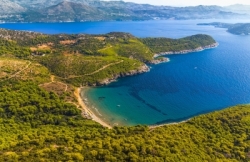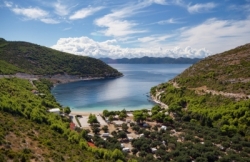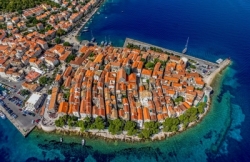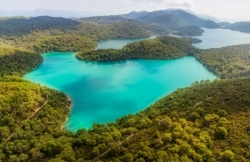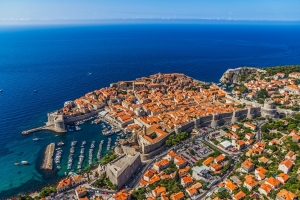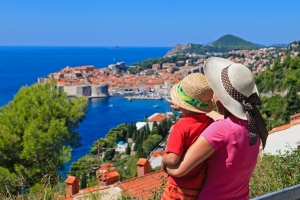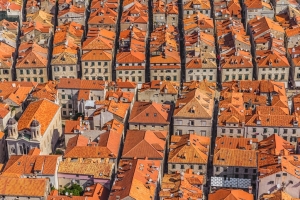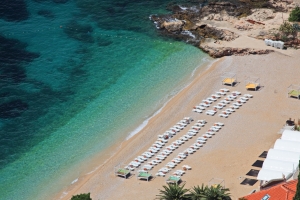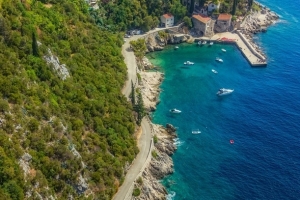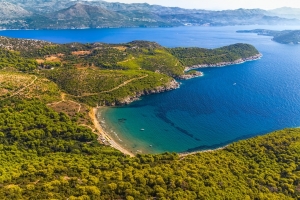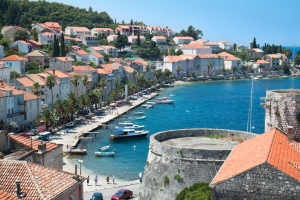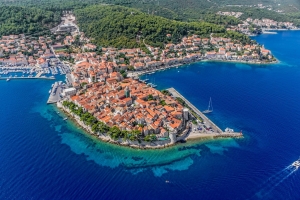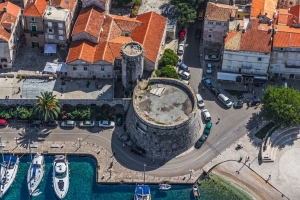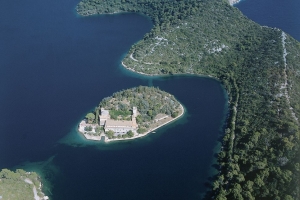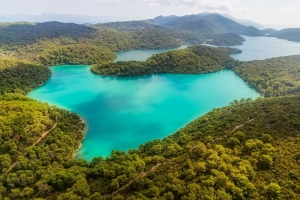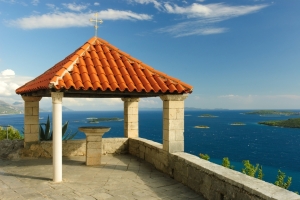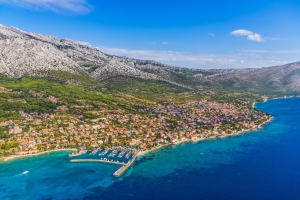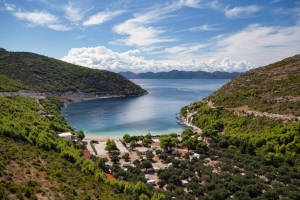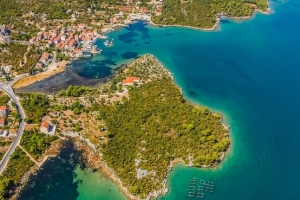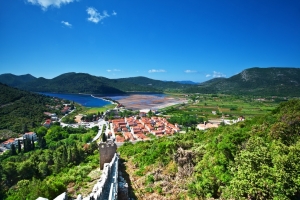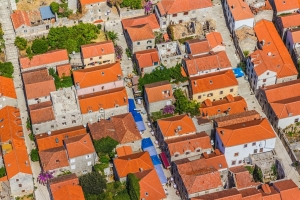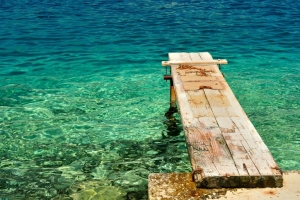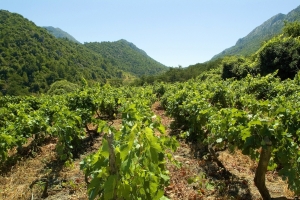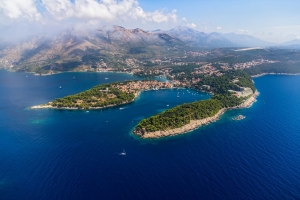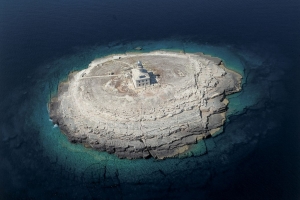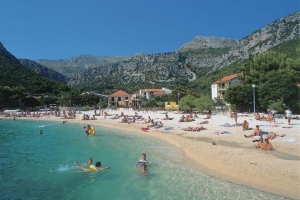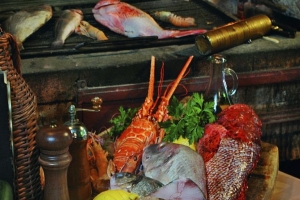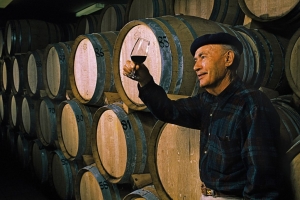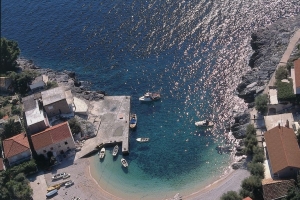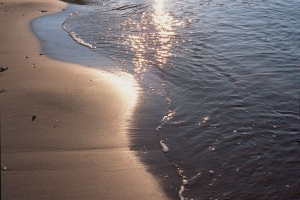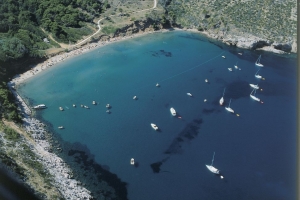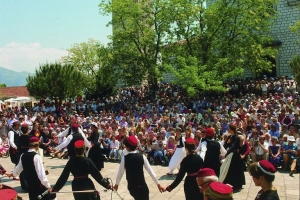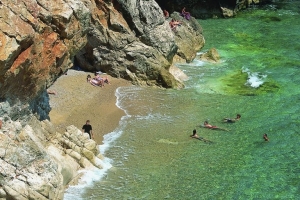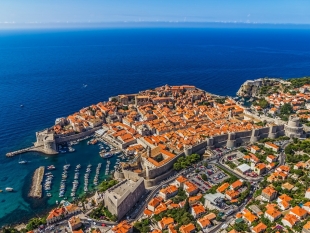


Where the boardwalk ends at Gradac, where the smell grilled eel makes your mouth water and the coastal mountains frame the mostly pebbly beach with crystal clear water is where South Dalmatia begins. The southernmost region of Croatia is pretty identical to the county of Dubrovnik-Neretva and is divided by the Neum corridor of Bosnia and Herzegovina into two parts. Croatia's checkered history has a lot to do with this unusual division. From the Romans to the Ottomans and the Venetians, to the Habsburgs, this land's history has been marked by many, and not to forget, immigration and the independence movement. Dubrovnik's isolation from the rest of southern Dalmatia is easily explained by its unique history. The city as well as others, as part of the Republic of Ragusa were autonomous and secured their special status over the centuries by cooperating with respective rulers. It is not surprising that southern Croatia was a popular invasion spot from all angles. Today its fruitful vineyards and gently rolling sheep pastures promise extraordinary culinary delights and its idyllic coves and hidden beaches invite you to relax and unwind. Their historic buildings and charming villages still exist today to be explored and amazed at. The wonderful combination of rugged coastline and pleasant countryside, mountains and sea, high culture and the simple country life all make southern Dalmatia a very special place.
Nature and Culture Along the Neretva
One of the most unusual areas of the mountain range dominated coast is the Neretva Valley, which is in itself enticing enough to fall in love with. The Neretva River's source lies on the border between Bosnia and Herzegovina and Montenegro, flows through narrow valleys and gorges. As it meanders through the land, it widens is some places and eventually forms a long-flowing delta, watering and fertilizing Croatian land as it goes. It is no wonder that the Neretva Delta is revered as Croatia's fruit basket. Many fruits, such as citrus fruits, and vegetables thrive in the mild climate, which can be found in local markets as well as in supermarkets and restaurants in the region. In the summer, between farming and harvesting, there is always time to keep up with the old and make new traditions in their past-time. Worth an unforgettable visit is also the Maraton Ida, the boat marathon, which has been held every year since the late 1990's on the second Sunday in August. In Metkovic, various teams compete in paddle boats of every size and shape against each other. The finish line of the marathon is about 22 kilometers from Ploce at the mouth of the Neretva. Ploce itself is also the annual host of the Utrka Trupa boat race. The city itself with its defiant church and palm and café- lined promenades is a well-kept secret, but still attracts visitors to its major port and hinterlands. Another popular destination are the lakes in the immediate vicinity of the city. The Birina Lake has a border coming practically to the city area and the Bacina lakes near Ploce frame an idyllically, wooded and mountainous lake district. The partly interconnected lakes can be up to 34 meters deep and offer refreshment and relaxation on hot summer days for visitors and locals alike. For those, by the way, who decide to start in inland Polce and follow the Neretva will, after a short time, end up in Herzegovina Mostar. This picturesque old town is, together with the “Old Bridge” that spans the the Neretva, UNESCO World Heritage Sites.
A trip well worth it is to the enchanting Bay of Koto in Montenegro, not far from Dubrovnik. Similar to a fjord, this bay winds along steep flanks and is popular with sailors because the deeply cut bays offer wonderful protection against treacherous winds. Given its special topography, it is hardly surprising that places like Herceg Novi are terraced. The seaside resort with its venerable, lovingly restored old town is mainly known for its slightly radioactive mud. The trading and port city of Kotor id idyllically situated in a deep, natural harbor just a stone's throw away from Dubrovnik. Due to its unique location and magnificent buildings, such as the 2,000 year old city wall and the beautiful St. Tryphon Cathedral, it has been recognized as an UNESCO World Heritage Site.
Dubrovnik: South Dalmatia's Thriving Pearl
The undisputed center of southern Dalmatia is Dubrovnik, the pearl of the Adriatic. Today, where high society and jet-setters bob around on their yachts and cruise in their boats, you will also find tourists strolling through this old town UNESCO World Heritage Site. Here where tourists flock, the city once posed as a great opposing threat to any would-be occupiers. Impressive evidence of this defensive mentality is the city's grandiose, completely accessible, comprehensive city wall which rings around the entire old city, giving guests a wonderful insight into the city's eventful history. Some of the fortified towers offer gorgeous views of the harbor city. From above, you can observe the main Stradun promenade, the Rector's Palace, the Cathedral of the Assumption of the Virgin Mary and some other well- preserved palaces. The 412 meter high Srd Mountain offers an even better view of the city and can be accessed by a modern, panoramic cable car. From here, the impressive Fort Lovrjenac and the Lokrum island next to Dubrovnik can all be seen. The island is only minutes away from Dubrovnik and is an oasis of relaxation and calmness. Subtropical vegetation appeals to the senses and a weightless swim in the salty lake will take you away from the every day bustle. Not far from Dubrovnik is another, less crowded town worth mentioning: Cavtat enchants its guests with its idyllic sandy beaches, small coves, as well as with its Roman and Venetian buildings that tell a story of bygone times. The former Greek settlement is now a popular seaside resort and marina just a stone's throw away from the “Athens of the Adriatic”.
Peljesac: Vineyards, Beach, and Historical Walls
In stark contrast to cruise and boating tourism, the beach life and the rich historical heritage of ancient cities forms the foundation for the Peljesac peninsula. As the second-largest peninsula of the country, this countryside is rather dominated by agriculture and is especially known for one thing: excellent wines. This wine is a product of a long wine-making tradition and also from a passion for all the good things in life. For those who wanted to know where such delights as Dingac or Postup come from, must take a trip to the wineries of Peljesac. But beware, wine tasting mixed with summer heat may not sit well for everyone! Those who prefer to find their indulgences at the beach, will find some of the most popular, rare sandy beaches in Orebic. Or would you fancy some sightseeing? In Ston, the longest preserved defensive wall awaits a visit from curious tourists. A visit to the charming little town is made even more pleasant by a dish of cultured oysters and a fine glass of wine. With belly full and feeling stronger, now it is time to proceed to the the salt marches of Ston. The white gold here unfolds in its unique appeal in an otherwise vineyard dominated region.
The Pure Holiday Experience: The Island World of South Dalmatia
The south of Dalmatia is more than just Dubrovnik, vineyards and tourists who are worthy witnesses of the ancient culture. This region is like no other and blessed with fantastically beautiful islands that are, not without a reason, popular among swimmers, sailors and nature lovers. The Elaphiten, for example, between Dubrovnik and Peljesac form a unique and fairy-tale like world. Since they have not yet been discovered by mass tourism, the islands have retained their charm with their majestic sandy beaches, quaint little villages and romantic ports. And of course, one of the most forested islands in the Mediterranean Sea is one of the most mentionable: the island of Mljet, which also belongs to the national park. This island is where the endangered monk seal has found its safe home. Korcula island in the southern Adriatic experiences a bit more traffic and is covered by pine forests. The island is famous not only because of the Moreska, a traditional sword dance, but also for the medieval beauty of Korcula city´s old town, for its subtropical, lush vegetation, idyllic bays, such as those from Pupnat and the popular sandy beach of Przina in Lumbarda. South of Korcula is Lastovo, a predominately mountainous island, which belongs to the same natural park. Sailors are especially grateful for the wonderful bays in the west of the island. Lastovo, near to Astornomen, is popular because of its low air pollution. This in turn means that the night sky provides fantastic opportunities for astronomical observations- even from the beach! The lights of the Milky Way are supernaturally beautiful as they reflect in the sea's dark water.
closeSubregions
Location
Total found: 7
Guest Comments
Overall Rating: 5.0Title: Bilderbuch Küstenlandschaft
Comment: WIr waren 2017 zu Zweit auf einem Roadtrip durch den Süden Dalmatiens. In 2 Wochen sind wir mit dem Mietwagen von Split bis Dubrovnik gefahren und haben dabei auch noch die Inseln Hvar, Korcula, Mljet und die Elaphiten besucht. Wir waren begeistert von der rauen Schönheit und Unberührtheit dieser Gegend und werden mit Sicherheit schon bald wieder kommen. Dubrovnik ist sehr schön, allerdings genauso wie auch Split im Sommer zu überlaufen. Korcula-Stadt hat uns auch sehr gut gefallen.
Rating: 5Why Best of Croatia ?
- Best Price Guaranteed
- No booking fees
- Thousands of satisfied customers
- Numerous objects with direct-booking option
- Intelligent search function with numerous useful filter options
- Extensive travel guide with lots of pictures and videos over 500 pages
- Detailed beach guide with more than 700 beaches







 Best of Croatia
Best of Croatia










